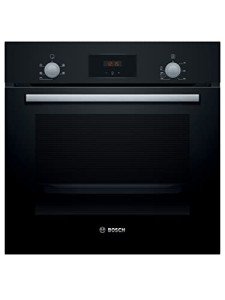Integrated Kitchen: The Good, The Bad, And The Ugly
페이지 정보
작성자 Francine 작성일25-05-19 13:10 조회7회 댓글0건관련링크
본문
The Integrated Kitchen: A Harmonious Blend of Functionality and Aesthetics
In today's busy world, the kitchen has actually developed from a mere cooking area to a multifunctional center that harmonizes with the overall flow of the home. The integrated kitchen principle is at the forefront of this change, integrating aesthetics with performance. This post explores the principles of integrated kitchen areas, their advantages, and necessary design elements, guaranteeing you understand what makes this contemporary kitchen design so attractive.
What Is an Integrated Kitchen?
An integrated kitchen is designed to seamlessly mix with the other living spaces in a home, shunning the traditional separation of the kitchen from the living and dining areas. This method stresses open floor strategies, [empty] effective usage of area, and cohesive style to create a unified appearance.

Key Features of an Integrated Kitchen
Open Layout: The substantial function of an integrated kitchen is its openness. Walls in between the kitchen, dining, and living areas are often gotten rid of to create a free-flowing space.
Unified Design Aesthetics: The style of an integrated kitchen often reflects the style of the adjoining locations. Cabinets can match the living room furnishings, and color design can be coordinated for a harmonious look.
Functional Zones: While it is open, an integrated kitchen still maintains practical zones-- cooking, preparing, and dining-- to guarantee usability.
Smart Storage Solutions: Integrated kitchen areas make use of clever storage options like pull-out cabinets, concealed appliances, and built-in electric ovens shelving to keep mess at bay.
Multi-Use Furniture: Island countertops, for example, are not just for prep work but can work as dining surfaces or communal areas.
Advantages of an Integrated Kitchen
The combination of kitchens brings forth various benefits:
| Benefit | Description |
|---|---|
| Area Optimization | Makes the most of making use of available area, particularly in smaller homes. |
| Improved Social Interaction | Fosters interaction and interaction amongst household members while cooking, dining, or amusing. |
| Increased Natural Light | An open layout enables much better light distribution, making the area feel larger and brighter. |
| Aesthetic Appeal | Develops a more aesthetically enticing living location with a cohesive design. |
| Increased Home Value | Modern, stylish integrated kitchens can significantly improve a residential or commercial property's market price. |
Style Elements to Consider
For homeowners aiming to produce an integrated kitchen, numerous elements should be thoroughly considered:
Color Scheme: Choose a color scheme that flows throughout the home. Neutral colors are versatile and tend to mix well.
Floor covering: Use constant floor covering product. Circulation from the kitchen to the living room can be boosted by matching tiles or wood.
Lighting: Incorporate layered lighting, including ambient, job, and accent lighting to boost functionality and aesthetics.
Appliances: Select Durable Built In ovens-built in electric ovens or panel-ready appliances to preserve a seamless appearance.
Island or Peninsula: Consider installing an island or peninsula that can serve several purposes-- cooking, dining, and mingling.
Sustainable Practices in Integrated Kitchens
As sustainability ends up being a growing concern, integrating eco-friendly practices into kitchen style can be helpful. Here are some tips:
- Energy-Efficient Appliances: Invest in ENERGY STAR-rated appliances to reduce energy consumption.
- Sustainable Materials: Opt for cabinets made from recovered wood or bamboo, both environment-friendly and trendy.
- Low-Flow Fixtures: Use water-saving faucets and components to promote water preservation.
- Recycling Stations: Designate spaces for recycling and composting to motivate sustainable living.
Frequently Asked Questions About Integrated Kitchens
What is the typical expense of an integrated kitchen?
The cost of an integrated kitchen differs widely, depending upon size, products, and complexity. Typically, property owners can anticipate to spend between ₤ 20,000 and ₤ 50,000.
How do I make sure proper ventilation in an integrated kitchen?
Appropriate ventilation can be accomplished through powerful range hoods, windows, and the strategic positioning of exhaust fans to get rid of cooking odors effectively without disrupting the open circulation of space.
Can integrated kitchen areas operate in little homes?
Definitely. Integrated kitchens can make little spaces feel bigger and more inviting by breaking down walls and enabling flexible designs.
What design style fits an integrated kitchen best?
Integrated kitchen areas can match a variety of styles, consisting of modern, modern, and rustic designs. The key is to preserve a cohesive aesthetic throughout the open area.
Are integrated kitchens more pricey than conventional cooking areas?
The total expense depends on different factors, consisting of design choices and materials used. Typically, integrated designs can be accomplished within a comparable spending plan, specifically when considering the worth they contribute to a property.
An integrated kitchen exemplifies the evolution of living areas built in electric oven modern-day homes, merging looks with performance. By allowing open designs, cultivating social interaction, and making use of clever storage, these kitchen areas supply a desirable environment for cooking, entertaining, and household bonding. As more homeowners recognize the many benefits of an integrated kitchen, this design pattern is most likely to continue growing in appeal, reshaping the way we think about our most crucial space.
댓글목록
등록된 댓글이 없습니다.
